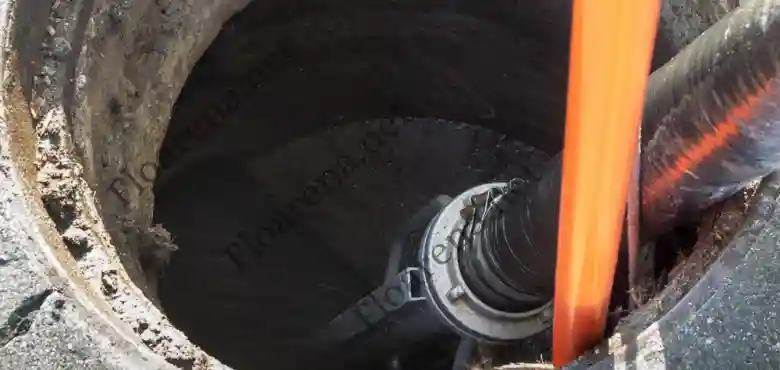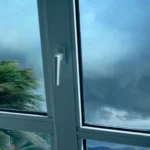Every homeowner dreads the moment when their plumbing system starts showing signs of trouble. Understanding Common Sewer and Drain Problems and How to Avoid Them can save you from costly repairs and stressful emergencies. This comprehensive guide explores the most frequent issues you might encounter and provides practical solutions to maintain your plumbing system’s health.
Understanding Your Home’s Plumbing System
Before diving into specific problems, it’s essential to understand how your home’s plumbing system works. The system consists of two main components: the water supply system that brings clean water in, and the drain-waste-vent system that removes wastewater. When either of these systems experiences issues, it can lead to significant problems throughout your home.
Most Common Sewer and Drain Problems
1. Clogged Drains
Clogged drains are perhaps the most frequent plumbing issue homeowners face. These blockages can occur in:
- Kitchen sinks: Often caused by food particles, grease, and oil accumulation that solidifies in pipes
- Bathroom sinks: Usually blocked by hair, soap scum, and personal care products
- Shower drains: Primarily affected by hair, soap residue, and mineral buildup
- Toilet drains: Typically clogged by excessive toilet paper, non-flushable items, or foreign objects
2. Tree Root Infiltration
One of the most severe sewer line problems occurs when tree roots invade underground pipes. Trees naturally seek out water sources, and your sewer lines provide both moisture and nutrients. Root infiltration can:
- Create cracks and breaks in pipes
- Form complete blockages over time
- Lead to sewage backups into your home
- Cause extensive damage requiring expensive repairs
3. Pipe Corrosion
Over time, pipes can corrode, especially if you have older plumbing systems made of metal. Corrosion issues include:
- Rust buildup reducing water flow
- Weakened pipe walls leading to leaks
- Discolored water due to rust particles
- Complete pipe failure requiring replacement
4. Grease Buildup
While it might seem harmless to pour cooking grease down the drain, it’s one of the leading causes of severe clogs. When grease cools, it:
- Solidifies and sticks to pipe walls
- Catches other debris, creating larger blockages
- Reduces pipe diameter, restricting water flow
- Can lead to complete system backup
5. Broken or Collapsed Sewer Lines
Aging infrastructure, ground movement, or excessive pressure can cause sewer lines to break or collapse. Signs include:
- Frequent backups in multiple drains
- Soggy spots in your yard
- Foul odors around your property
- Unusually lush grass patches over sewer lines
Common Sewer and Drain Problems and How to Avoid Them
Regular Maintenance
Implementing a routine maintenance schedule is crucial for preventing major plumbing issues:
- Schedule professional inspections annually
- Use enzyme-based drain cleaners monthly to prevent buildup
- Clean drain stoppers and strainers weekly
- Monitor water pressure and flow regularly
Proper Disposal Practices
Many drain problems can be avoided by being mindful of what goes down your drains:
- Never pour grease or oil down kitchen drains
- Use sink strainers to catch food particles
- Dispose of coffee grounds in compost or trash
- Only flush toilet paper and human waste
Tree Management
To prevent root infiltration:
- Know the location of your sewer lines
- Plant trees away from underground pipes
- Choose species with less aggressive root systems
- Consider root barriers for existing trees
Water Quality Management
Maintaining proper water quality can extend the life of your plumbing system:
- Install water softeners in hard water areas
- Use filters to remove sediment and minerals
- Maintain proper pH levels
- Consider whole-house filtration systems
Warning Signs of Sewer and Drain Problems
Early detection can prevent minor issues from becoming major problems. Watch for:
Slow Drainage
- Water pooling around shower drains
- Sinks taking longer than usual to empty
- Gurgling sounds from drains
- Water backing up in unexpected places
Unusual Odors
- Sewer smell in bathrooms or basements
- Musty odors around drains
- Persistent unpleasant smells in yard
- Rotten egg smell from fixtures
Visual Signs
- Water stains on walls or ceilings
- Mold or mildew growth
- Cracks in foundation
- Wet spots in yard
Professional vs. DIY Solutions
When to DIY
Some minor issues can be handled without professional help:
- Simple drain clogs using a plunger
- Regular drain cleaning maintenance
- Replacing drain covers or stoppers
- Minor leak repairs in accessible areas
When to Call a Professional
Certain situations require expert intervention:
- Persistent clogs that resist DIY methods
- Multiple drains backing up simultaneously
- Sewage odors or backups
- Suspected pipe damage or collapse
Modern Solutions for Drain and Sewer Maintenance
Technology in Plumbing
Modern plumbing solutions offer new ways to prevent and address problems:
- Video camera inspections for detailed pipe analysis
- Hydro-jetting for thorough pipe cleaning
- Trenchless repair methods for minimal disruption
- Smart water monitors for leak detection
Eco-Friendly Approaches
Environmentally conscious solutions are becoming more popular:
- Biodegradable drain cleaners
- Water-efficient fixtures
- Sustainable pipe materials
- Green cleaning practices
Cost Considerations
Prevention vs. Repair
Investing in prevention is typically more cost-effective than emergency repairs:
- Regular maintenance costs are predictable
- Emergency services often come with premium charges
- Prevention helps avoid property damage
- Maintenance extends system lifespan
Insurance and Coverage
Understanding your coverage options is important:
- Check what your homeowner’s insurance covers
- Consider additional sewer line coverage
- Document maintenance for claim purposes
- Keep records of all repairs and services
Seasonal Maintenance Tips
Spring and Summer
- Check for winter damage
- Clean gutters and downspouts
- Inspect outdoor drainage systems
- Address any tree root concerns
Fall and Winter
- Protect pipes from freezing
- Clear leaves from drainage areas
- Inspect for damage before cold weather
- Schedule pre-winter maintenance
Long-term Prevention Strategies
System Updates
Consider upgrading your plumbing system:
- Replace aging pipes proactively
- Install modern fixtures and fittings
- Update to more efficient systems
- Add preventive features like backwater valves
Documentation and Planning
Maintain detailed records of your plumbing system:
- Keep maintenance schedules
- Document all repairs and replacements
- Create a plumbing system map
- Plan for future upgrades
Conclusion
Understanding common sewer and drain problems and how to avoid them is essential for every homeowner. By implementing regular maintenance, being mindful of proper usage, and addressing issues promptly, you can prevent many common plumbing problems and extend the life of your system. Remember that while some issues can be handled independently, others require professional expertise. The key is knowing the difference and acting accordingly to maintain a healthy plumbing system.






